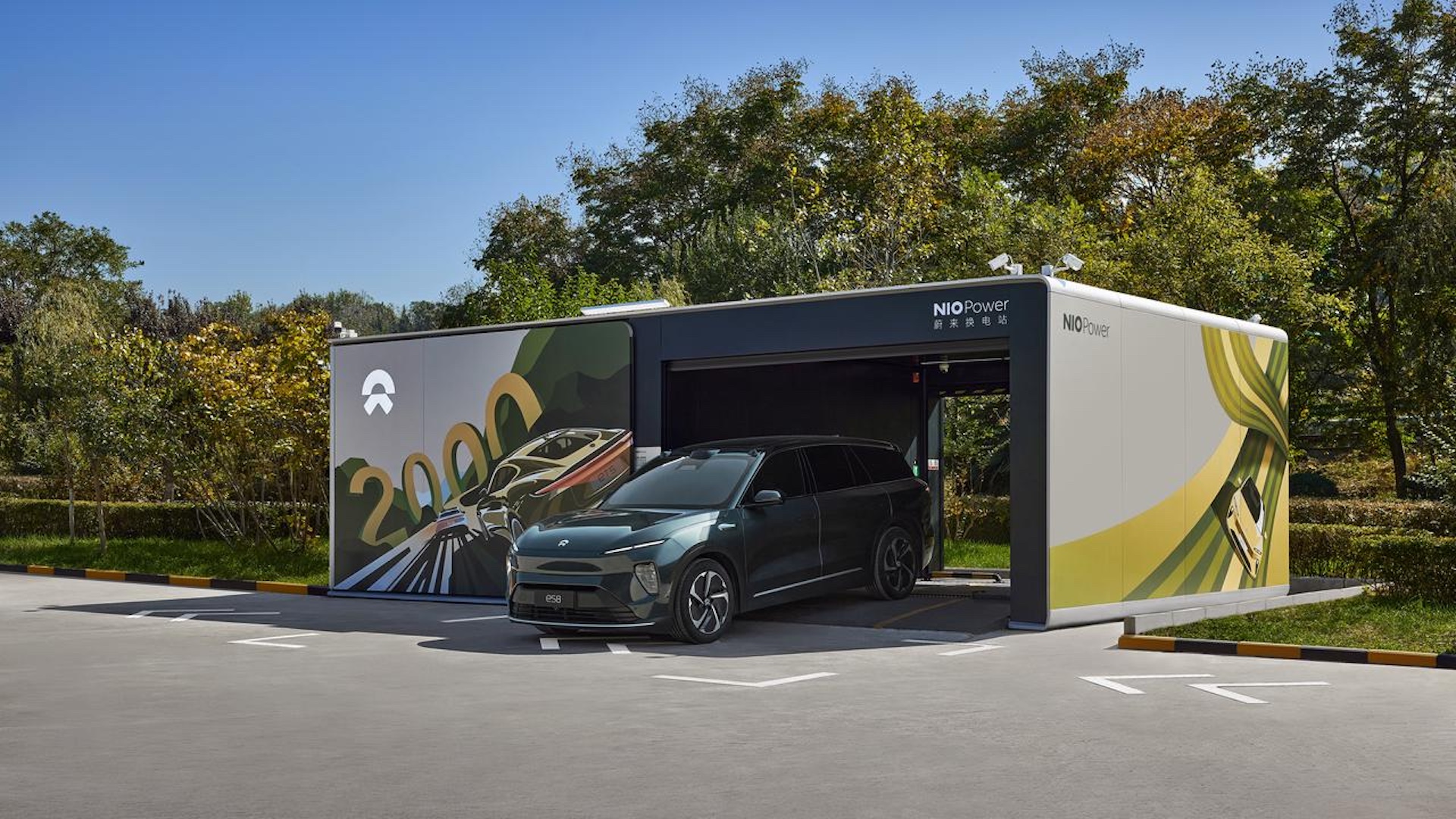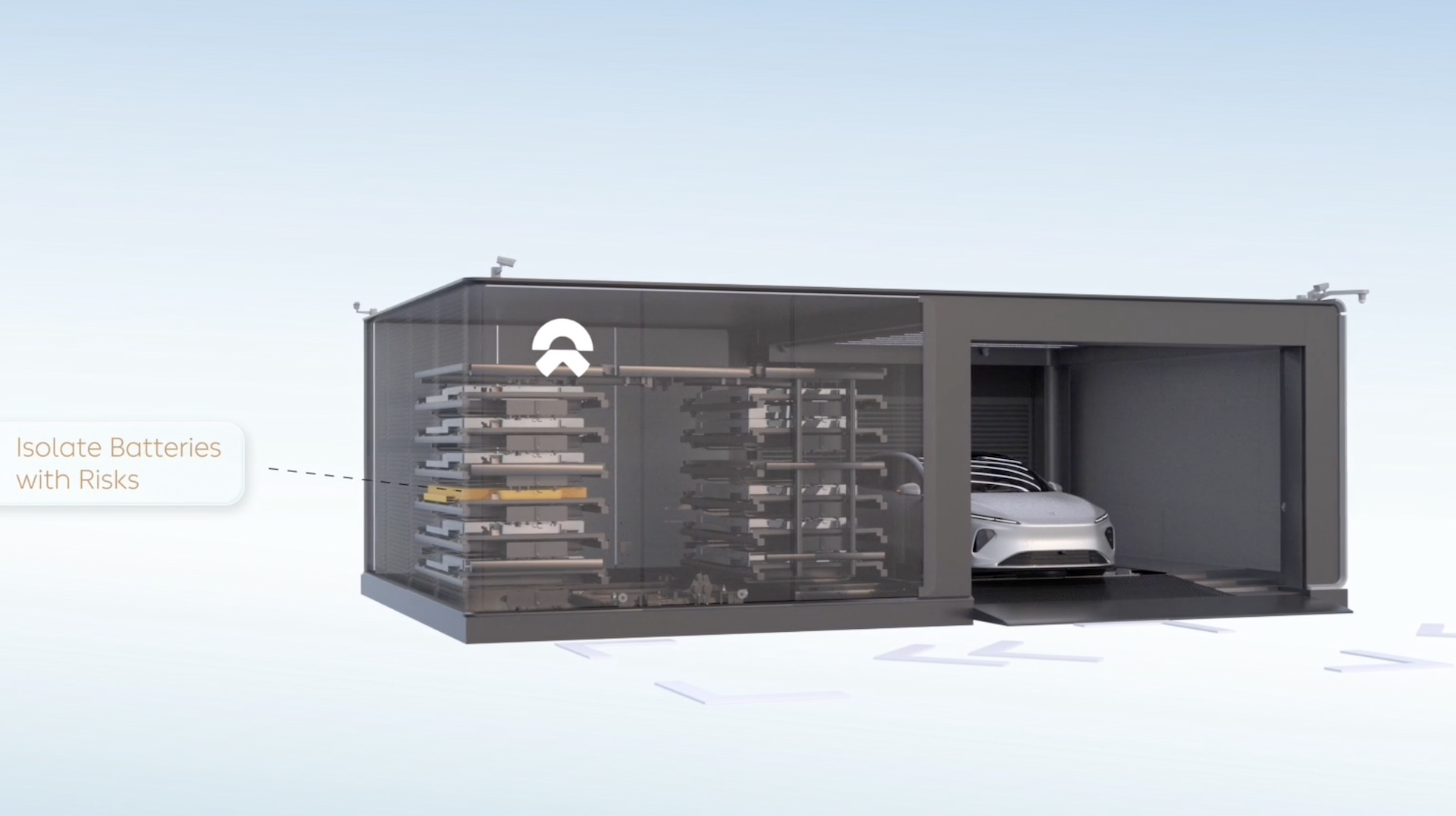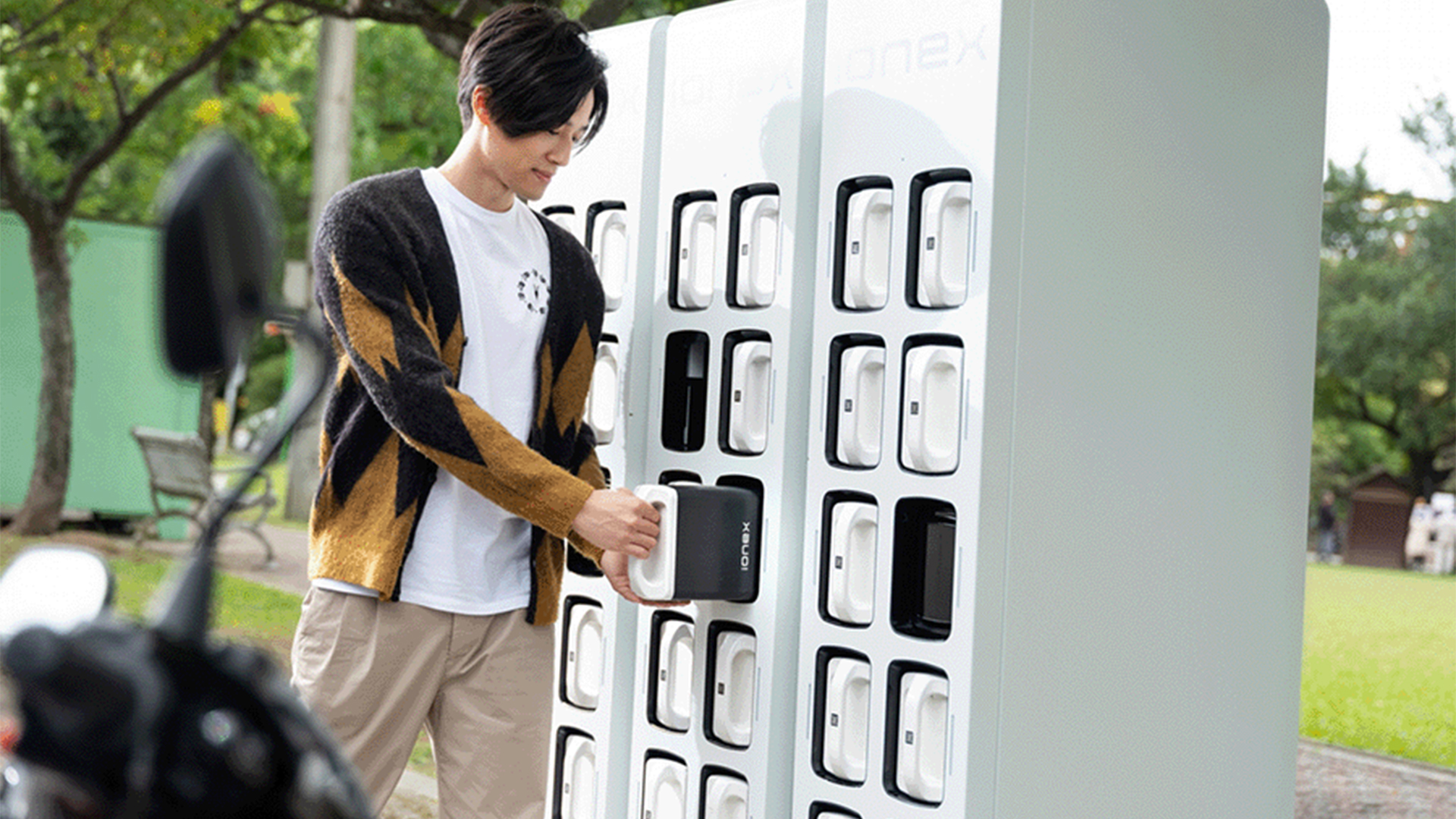Forget charging EV batteries – this video shows how fast Nio's battery-swap tech is
Quick and surprisingly convenient, is battery swap tech the future?

Battery swapping technology in electric vehicles is nothing new. In fact, this writer is unfortunately old enough to remember witnessing Renault demonstrating its surprisingly state-of-the-art Fluence Z.E, which could have its entire battery pack quickly removed and replaced by robots some 20 years ago.
Stark reminders of one's mortality aside, battery swap tech was pretty much deserted by carmakers in favor of pursuing larger and more efficient lithium-ion battery packs, as well as faster charging speeds. That was the case in Europe, at least, but Chinese firms, such as Nio, are bringing the tech back… in a big way.
In fact, according to Inside EVs, Nio has around 2,000 Nio Power battery swap stations in China alone, with that number set to expand quickly in the coming months. Nio is also starting to dramatically increase sales in Europe, so has brought 27 similar stations to Germany, Norway, Sweden, Denmark and The Netherlands, where its vehicles are rapidly gaining popularity.
Largely abandoned because the technology requires a fair amount of real estate (and cost) to deal with a relatively limited number of vehicles per day, it is an undeniably faster and more convenient way of achieving a 100 per cent state of charge (SOC) compared to the often slow and unreliable public charging network.
In a video that recently surfaced on TikTok (below), a Nio EL7 owner from Oslo, Norway, neatly documented just how quick and convenient battery swap systems can be.
In the clip, the owner uses a vocal prompt to initiate navigation to a nearby battery swapping station. Handily, there is one in the vicinity, so upon arriving, the Nio then begins the highly automated process of readying itself for a full battery replacement.
The driver merely sits back while the vehicle autonomously manoeuvers itself into the correct bay, where it communicates with the battery swap station and the procedure commences. It’s all over and done with in a few minutes and the owner happily drives away with 100 per cent charge.
Sign up for breaking news, reviews, opinion, top tech deals, and more.
According to Inside EVs, Nio says its Third Generation Power Swap Station, which entered service in April 2023, is capable of 408 swaps per day. However, battery swap technology only works if EV owners opt to lease the battery, referred to as Battery-as-a-Service (BaaS) in the industry.
In this instance, it reduces the entry price to the vehicle itself, as it effectively removes the very expensive battery package from the total cost. This not only opens up the option of battery swap on the road, it also reduces the worry of faulty battery packs proving a costly repair once the vehicle is out of warranty.
Analysis: Is battery swap the future?

Battery swap stations, like those used by Nio, aren’t likely to replace public EV chargers any time soon, seeing as the cost of initial build and maintenance far outweighs the cost of installing a handful of charging outlets.
That said, it could be an additional string to the EV owner’s bow, with the potential to relieve some of the strain on the public charging network.
What’s more, this battery swap technology is also increasing in popularity with smaller electric vehicles, the most obvious of that being the more compact and more convenient electric motorcycle.
Kymco, one of the largest electric motorcycle manufacturers in the world, recently announced its Ionex plug-and-play EV battery ecosystem, which looks set to rival similar technology from Taiwanese upstart Gogoro and Japanese motorcycle giant Honda.

Seeing as these battery packs are a lot smaller than those found on electric cars, the battery swap stations are often no larger than a typical vending machine, with the owner physically untethering their battery, slotting it in to the appropriate area and walking away with a fresh unit and 100 per cent charge.
Naturally, this is currently more difficult to achieve on an electric car, where robots and hydraulics have to do the majority of the heavy lifting. But as battery packs become smaller and more energy dense, the entire battery-swapping system could get a lot simpler and eventually, we may see a time where swapping the battery on an electric car is as simple as Kymco’s proposed system.
You might also like
- Kymco’s battery-swapping tech could be a huge deal for small EVs – here's why
- Battery swapping for EVs getting mainstreamed: Sun Mobility ties up with Amazon
- Tesla's EV sales are slipping – here's what that means for electric car buyers

Leon has been navigating a world where automotive and tech collide for almost 20 years, reporting on everything from in-car entertainment to robotised manufacturing plants. Currently, EVs are the focus of his attentions, but give it a few years and it will be electric vertical take-off and landing craft. Outside of work hours, he can be found tinkering with distinctly analogue motorcycles, because electric motors are no replacement for an old Honda inline four.